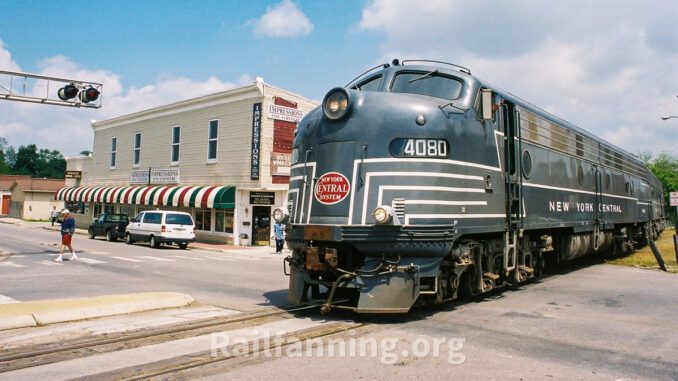
NASHVILLE — A long, silver string of passenger coaches glisten in the morning sun as they await passengers to board.
Porters stand ready to check tickets and help passengers step onto the train. Soon, in the distance, a whistle blows, signaling the departure is near.
The view resembles a scene out of the 1950s, a time when trains were the preferred method of travel.
However, the setting isn’t confined to the history books — it can be found on Willow Street at the Tennessee Central Railway Museum.
Every year, the Tennessee Central Railway Museum offers more than 20 excursions from Nashville to various Middle and East Tennessee cities, including Watertown and Cookeville.
The museum is located at the former Tennessee Central Railway’s Master Mechanic’s office on Willow Street. The museum’s fleet includes numerous museum- and privately-owned passenger cars, cabooses and diesel engines, including ones formerly used by Amtrak.
A string of EB diesel engines, which pulled passenger and freight trains for years before being delegated to excursion service, serve as the power for the museum’s trains.
Behind the engines follow a seemingly countless number of passenger coaches, all of which served assorted railroads for decades before their retirement from active duty.
Onboard, passengers ride in style, with first-class and deluxe accommodations available. A diner car awaits hungry passengers, while the railroad collector can look forward to the souvenir car featuring railroad mementos and museum-related souvenirs.
As the train leaves Nashville, it heads east through numerous communities, including Mount Juliet and Lebanon, which grew up along the railroad. Today, trains traverse these cities barely long enough for passengers to grab a glimpse as the train speeds through town.
As the setting turns rural, riders are treated to a picturesque countryside — rolling farmland and rock bluffs fill the passenger coaches’ windows.
The Tennessee Central Railway, which at its heyday operated a line between Harriman and Hopkinsville. Ky. Like other railroads in the latter half of the 19th century, the Tennessee Century grew after combining a slew of smaller short lines, many of which bore the name “Tennessee Central.” All would later come under the control of former Memphis & Charleston Railroad president Jere Baxter, who organized the Tennessee Central Railroad on Aug 23, 1893.
Tracks between Nashville and Knoxville were completed in 1898. Later, Baer tried unsuccessfully to complete a section of road between Nashville and Memphis, according to the Tennessee Encyclopedia of History and Culture. However, a lack of adequate finances hampered the company from its beginning, with several receiverships and bankruptcies occurring.
In 1905, the railroad leased its western section to Southern Railway and its eastern section to the Illinois Central, which finished laying tracks to Clarksville and Hopkinsville.
However, by June 30, 1908, both Southern and the Illinois Central ended their leases. The Tennessee Central Railway was later reorganized and remained a freight railroad until it ceased operations on Au. 31, 1968. At that time, a court-appointed trustee divided the property among three competing railroads: the Illinois Central, the Louisville and Nashville Railroad and the Southern Railway.
Today, the Tennessee Central Railway lives on in a different incarnation — a museum. The museum offers excursions — many of which are themes — throughout the year.


